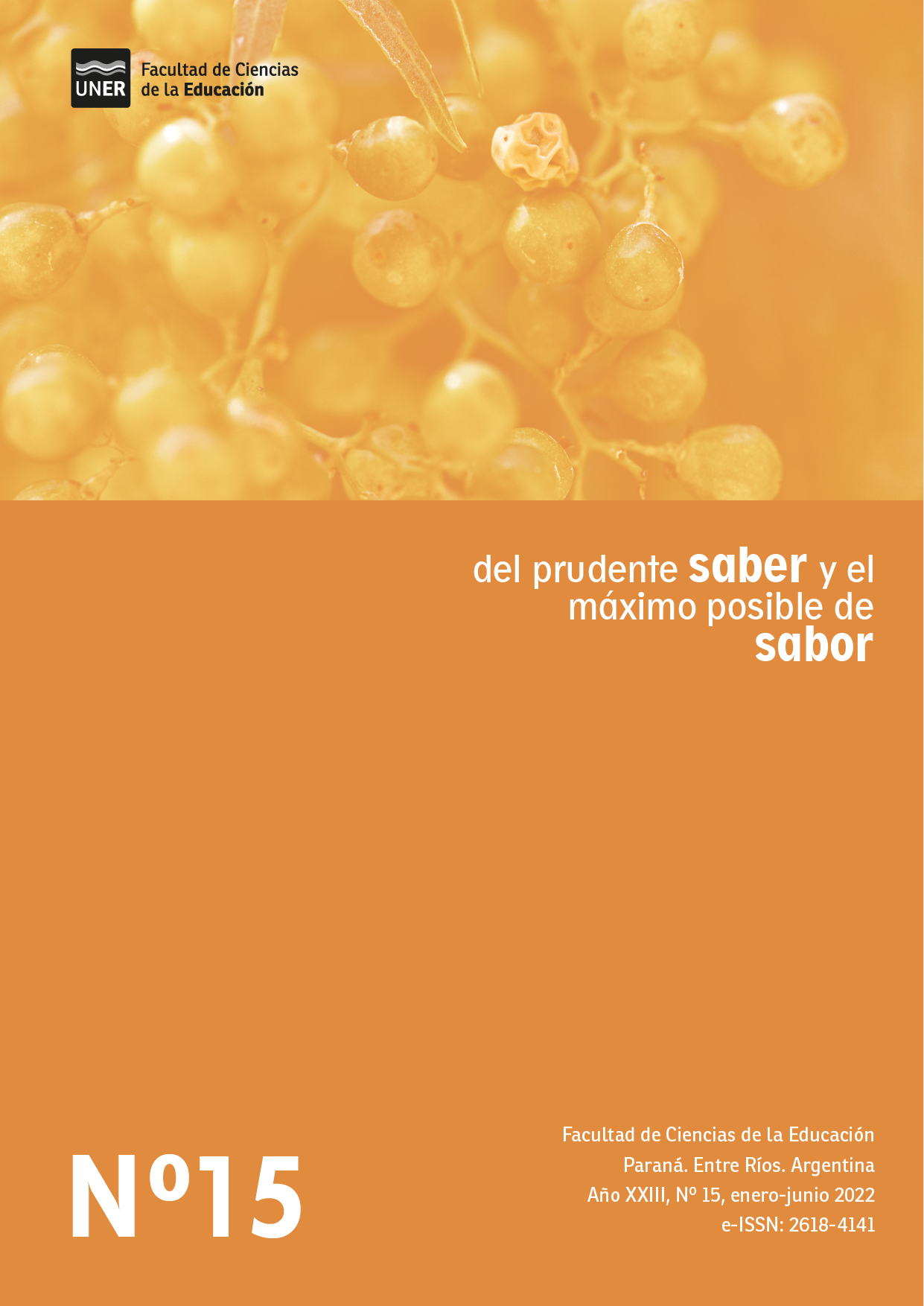Photosensitive Traces. Reflections on the Experience of the Discussion Meetings of the Project «Imágenes Presentes»
Main Article Content
Abstract
In this article we reflect on the process of designing and developing the discussion meetings entitled «Imagen y Memoria. Fotografía, cine y artes visuales en las disputas en torno a la representación del pasado» within our project «Imágenes Presentes». With a background in anthropology and photography, we draw up the meetings in order to intersect these fields of know-how, discuss in non-academic spaces about the uses, production and circulation of images in everyday life, and highlight the importance of images in memory construction processes.
Aiming at debating issues theoretically researched by the human and social studies from a plurality of points of view, we put into practice a pedagogical device that consisted of addressing these issues horizontally and collectively from the viewing of images (photographs, films, aesthetic interventions- politics, visual and performative works). We were interested in analyzing some of the experiences in the different educational instances and recovering our own productions and those of the participants of the meetings to think how working with and from images allows us a common support for sharing previous knowledges, trajectories and memories enabling the possibility to imagining collectively reflective and creative practices around traumatic events, violence, demands for truth and justice and fighting processes linked to human rights.
Considering this proposal as a critical device of visibility, we suggest that those meetings become emotional experiences of mutual affection that build an «ephemeral collective» and a temporary state of communitas that encourages new practices of production and circulation of knowledge and defies instituted regimes of visibility allowing another kind of attention, examination and sensitivity to images.
Downloads
Article Details

This work is licensed under a Creative Commons Attribution-NonCommercial-ShareAlike 4.0 International License.
Las ediciones no tienen cargos para las y los autores ni para las y los lectores, y se incita a las y los autores a depositar sus contribuciones en otros repositorios institucionales y temáticos, con la certeza de que la cultura y el conocimiento son un bien de todos y para todos. DPS permite la reutilización luego de su edición (Post print) citando la autoría y la fuente original de su publicación. Su uso no puede ser con fines comerciales.
References
Baer, A. (2006). Holocausto. Recuerdo y representación. Losada
Candau, J. (2002). Memorias y amnesias colectivas. En: Antropología de la memoria. Nueva Visión.
Da Silva Catela, L. (2014). Lo que merece ser recordado… Conflictos y tensiones en torno a los proyectos públicos sobre los usos del pasado en los sitios de memoria. Clepsidra. Revista lnterdisciplinaria de Estudios sobre Memoria, Vol. 1. N.° 2, 28-47.
Didi-Huberman, G. (2004). Imágenes pese a todo. Memoria visual del Holocausto. Paidós.
Didi-Huberman, G. (2018). Cuando las imágenes tocan lo real. En: Didi-Huberman, G., Chéroux, C. y Arnaldo, J. Cuando las imágenes tocan lo real. Círculo de Bellas Artes.
Feld, C. (2014a). ¿Hacer visible la desaparición?: las fotografías de detenidos-desaparecidos en el testimonio de Víctor Basterra. Clepsidra. Revista interdisciplinaria de Estudios sobre Memoria, Vol. 1, N.° 1, 28-51.
Feld, C. (2014b) El «show del horror»: memorias en pugna durante la transición democrática. En: Lanata, J. L. (comp.) Prácticas genocidas y violencia estatal en perspectiva transdisciplinar, San Carlos de Bariloche, LLDyPCa-CONICET, 154-164.
Freire, P. (1970). Pedagogía del Oprimido. Nueva Tierra.
Freire, P. y Faundez, A. (2013). Por una pedagogía de la pregunta. Siglo XXI.
Fernández Mouján, I. (2013). Redefinición de los alcances de la pedagogía de la liberación en sus dimensiones ética, política y cultural. − 1a ed. − Viedma: Universidad Nacional de Río Negro (Tesis doctoral). http:// hdl.handle.net/20.500.12049/84 ISBN 978-987-2773-96-0
Haraway, D. J. (1995). Ciencia, cyborgs y mujeres: La reinvención de la naturaleza. Cátedra.
Jelin, E. (2002). Los trabajos de la memoria. Siglo XXI.
Longoni, A. (2010). El siluetazo, en las fronteras entre el arte y la política. En: Birle y otros (comps.) Memorias urbanas en diálogo: Berlín y Buenos Aires. Buenos Libros.
Margiotta, G. y Balbé, W. (2019). Imágenes presentes: Intervención del espacio público en la conmemoración de los 40 años del golpe cívico militar del 76. Clepsidra. Revista Interdisciplinaria de Estudios sobre Memoria. ISSN 2362-2075. Volumen 5, N.°11, marzo 2019, 126-141.
Pollak, M. (1989). Memoria, olvido, silencio. Revista Estudios Históricos, 2(3), 3-15.
Rabotnikof, N. (2007). Memoria y política a treinta años del golpe. En: Licia. Clara E. Crespo, Horado y Yankelevich, Pablo (comps.) Argentina, 1976. Estudios en torno al golpe de Estado. El Colegio de México, Centro de Estudios Históricos.
Rancière, J. (2010). El espectador emancipado. Manantial.
Rancière, J. (2008). El Teatro de las imágenes. En: Jaar, A., La Política de las Imágenes. Metales Pesados.
Rancière, J. (2002). [1987]. El maestro ignorante. Cinco lecciones para la emancipación intelectual. Laertes S.A de Ediciones.
Rivera Cusicanqui S. (2015). Sociología de la imagen. Miradas Ch›ixi desde la historia andina. Tinta Limón.
Taylor, D. (2009). Cuerpos políticos. En: Brodsky, M. y Pantoja J. (comps.) Body Politics. Políticas del cuerpo en la fotografía latinoamericana. La Marca editora.
Turner, V. (1974). Dramas, Fields and Metaphors. Ithaca: Cornell University Press.

